House Lifting Guide: How, Types, Reasons & Cost Breakdown
8 Mins Read
April 25th, 2024
Jump ahead to:
If you’re in a compact house and you’ve outgrown your home, you want to strengthen your foundation or you want to have some fun creating an extra room or face a tough time every monsoon, lifting your house a few inches off the ground has crossed your mind at some time or the other.
For all the above reasons we cited before, there’s no other solution but to dig up a new foundation by carrying on with house lifting. In this article, we’re going to take you through everything there is to know about house lifting and get you prepared for it.
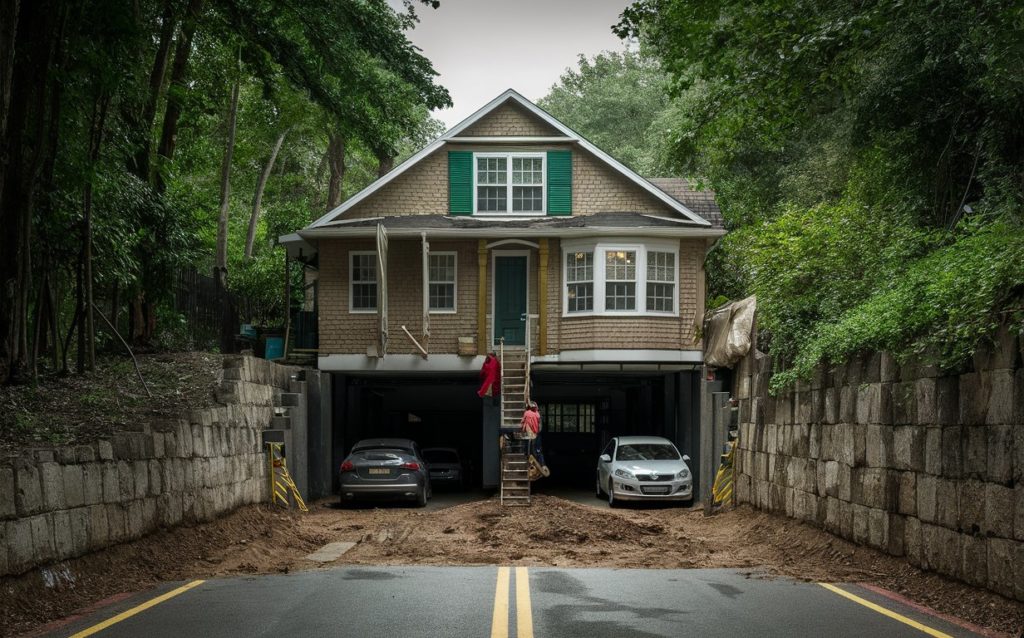
House lifting, although not as expensive as remodeling, or demolition and reconstruction, does need you to part with a considerable amount of money, somewhere in the range of $20,000 to $100,000, depending on which state you’re in. So, go for it if you resonate with any of the following reasons:
✅ Turn off all utility services – water, gas, electricity, sewage, and telephone lines, etc
✅ Split or remove your kitchen countertop and other hanging fixtures in the interior of the house
✅ Vacate all moveable items from the house that could crumble during the house lifting
✅ Fill windows and openings with masonry to even the load on hydraulic jacks
✅ Build temporary walls to ensure even support
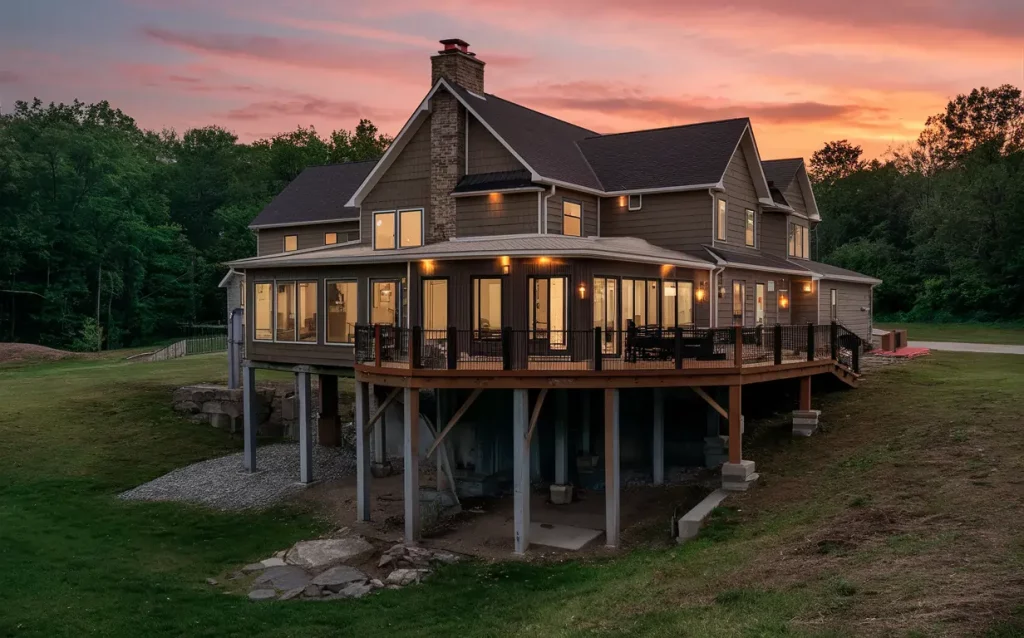


You need to check if the existing foundation has enough strength to bear the load of the addition. If you’re planning to lift the house by 10 feet, check if the existing foundation has enough strength to withstand an extra 10 feet. Without proper support, the foundation won’t be able to bear the new construction. Take some time to check the existing and proposed plans of the house to determine exactly how much the house needs to be raised.
Read also – 10 Reasons Why Landscape Architecture Is Important
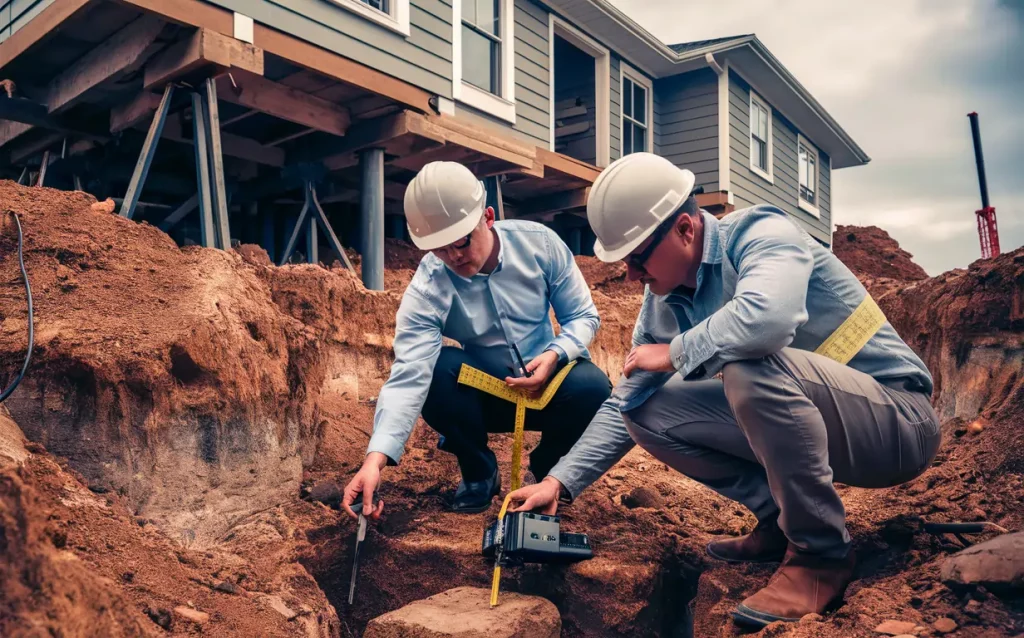


Bring in an architect, and/or an engineer to evaluate what type of soil you have underneath your house, right in the foundation, and determine its strength. If it has lost its strength over the years, it may not be a good idea to carry on with your house lifting. But, if it is, go ahead and check the other materials you used to construct your house – beams, columns, and walls. Only if everything is durable and strong enough to endure the house lifting will you get a go-ahead from your architect.
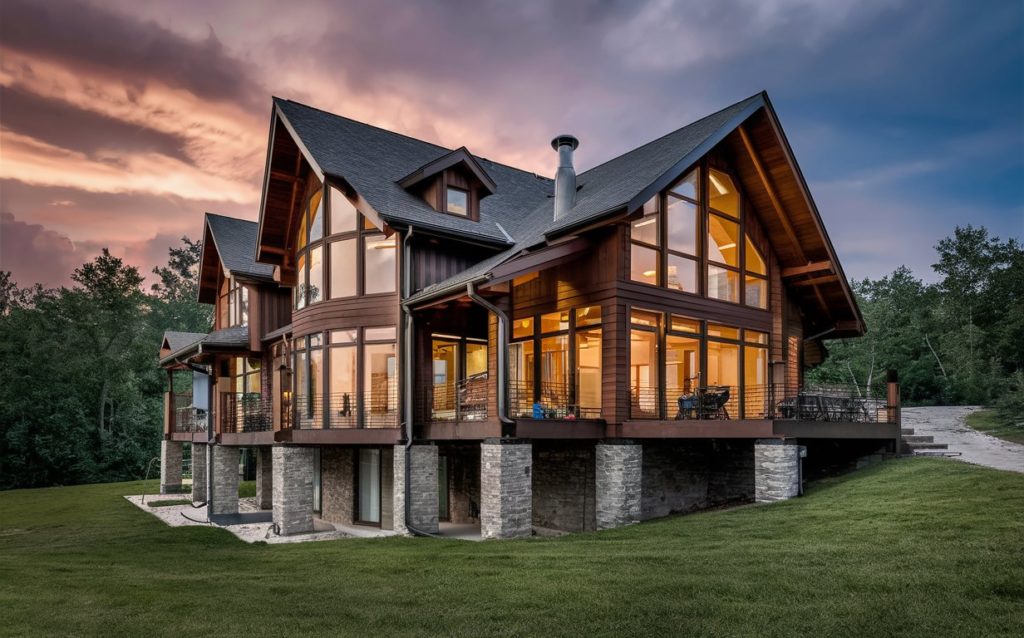


To determine how many hydraulic jacks you need, use the following formula:
Total house load = Sum of dead load + live load + snow load + impact load
No. of hydraulic jacks required per meter square = Total load/Capacity of 1 hydraulic jack
If the load of the house is high, the spacing between the hydraulic jacks is low. If the load is low, spacing is high, to manage the load and distribute it evenly.
Read also – 9 Best Sustainable Architecture Design Ideas
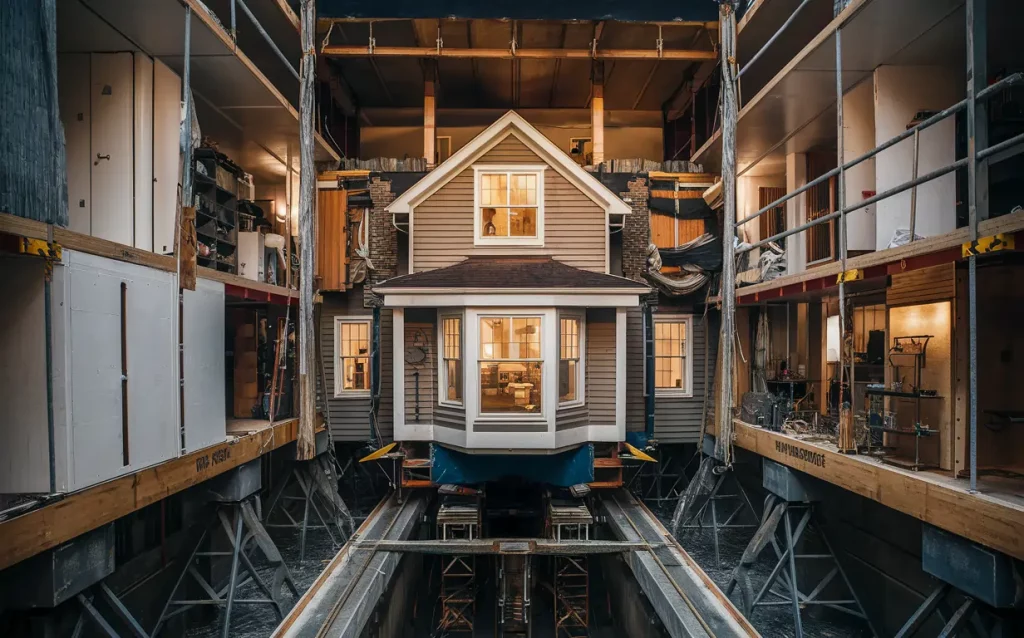


When the entire house is lifted keeping all other things intact, you need to make sure of every little detail to make sure there’s little to no damage whatsoever to the existing structures and fixtures of the house. That’s why you remove all items in the house, support the cantilevers and other fixtures you have installed with cement and masonry, and even go to the extent of building temporary walls to get the right support you need.
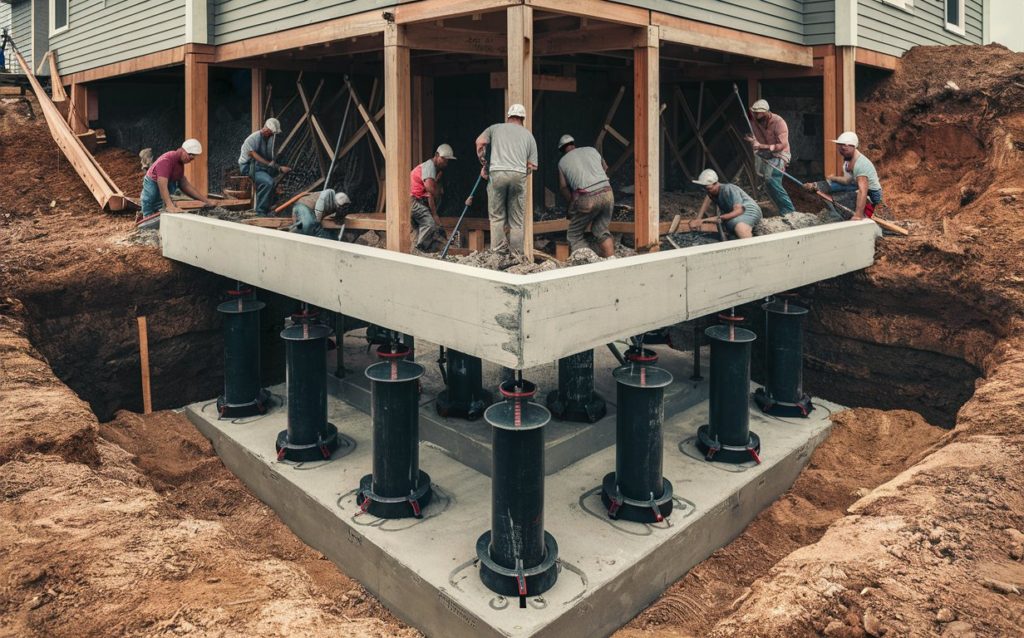


You should start digging the peripheral area of the house. Create a strong concrete base for the walls to hold jacks, so that they don’t go down when you lift the house. Hydraulic jacks are placed in the concrete base below the beam for support, and they lift uniformly. Once you have the team dig out the depth you want for your new foundation, you prepare for the support.
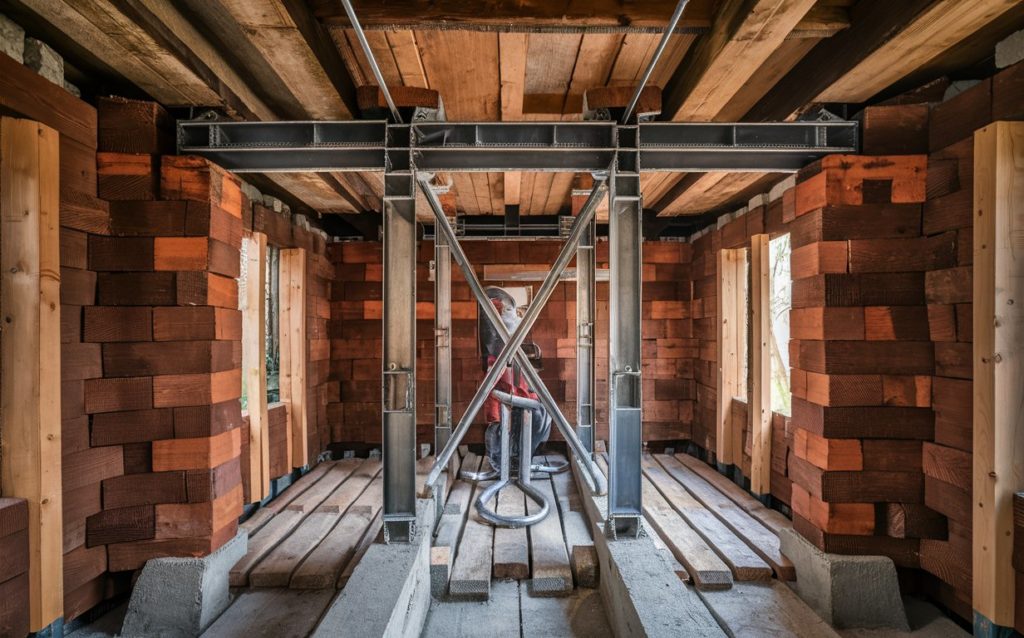


Wooden blocks are placed above the hydraulic jacks. Steel girders are placed above wooden blocks. The girders are filled with concrete to strengthen them to hold the load of the walls. Ensure all girders are welded together and wooden planks are placed in between the girders and the beams. The same method is followed for the internal walls as well.
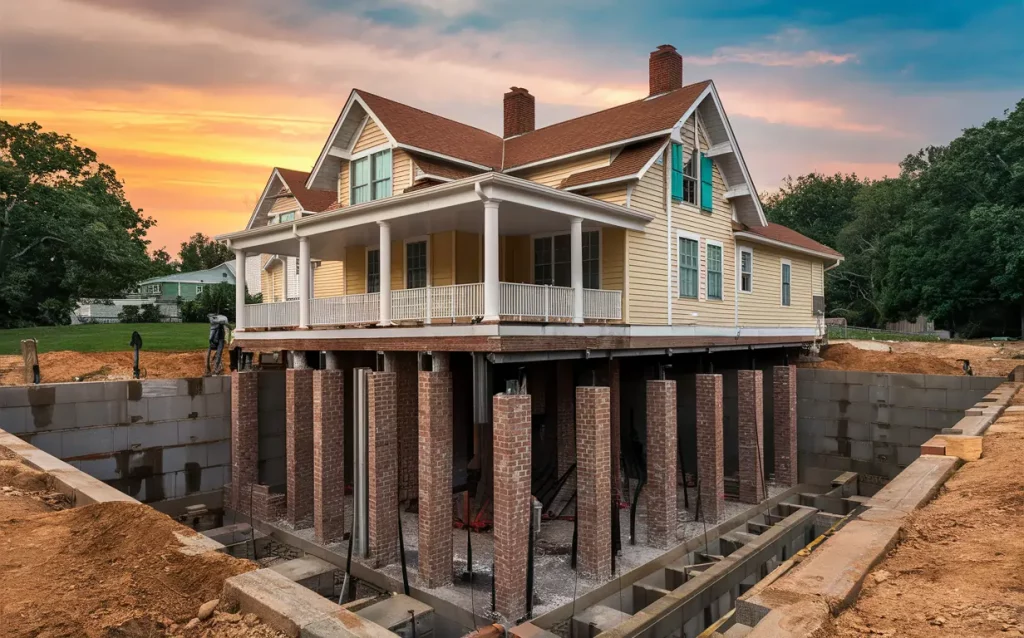


Pre-existing columns are removed from the foundation after the house is lifted by the hydraulic jacks. After that, the jacks are removed and parallel brick masonry is laid to support the lifted house. It takes about 15-20 days (may take more or less depending on the climate and circumstances you’re in) to lay down the new foundation. The elevated house is connected to the new foundation with new columns and walls. Backfill the soil along the peripherals of the house.



As much as you need a structural engineer and their team to help you with house lifting, you need an architect and a designer equally. Along with the engineer, they take a look at the aspects of the house that will be changed, demolished, and revamped and will help you understand what you need to prepare or modify before vacating the house for house lifting.
If you want to design a whole new basement for your house, you undoubtedly need them to figure out and design how your existing system will fit into the new basement, where the gas line will be, the electrical outlets will be, sewage will be (if you’re planning to install a bathroom/toilet) in the basement and several other items that need to be checked off before you tear your house apart and start lifting.
Just as you chalk up the house lifting and foundation improvement plans, you also need to carefully evaluate how this move will affect your frontage, your yard, your neighbor’s septic area, your water area, etc. You need a qualified architect to walk you through this crucial phase, so you don’t get into trouble later on with your neighbor.
Another important activity you need an architect with you for is soil testing before commencing the house lifting project and getting the necessary approvals from the authorities concerned. The engineer will coordinate with their team. But, to coordinate with other vendors, and material supplies, follow up on schedule, and ensure the project is done to the best of quality, you need a qualified architect and designer.
Since the interior and exterior walls may have a chance to crack under pressure, or when they’re being lifted, and the hanging fixtures on the interiors and exteriors are going to be modified or supported, you need an expert designer to guide you through how you can support the structures carefully (to preserve their structure and aesthetics) without having to incur damages during the house lifting process.
After the house lifting, your interiors and exteriors have a good chance of needing a revamp, and a touch-up to make them look as good as ever. Guess who you need by your side? You guessed that right.
Real also – The Difference Between Architecture and Interior Design
Given that your home’s site plan is unique, how do you know which level of house lifting you should do? You figure it out by visualizing your house at different levels with the structures you want and ruling out the ones that don’t fit in.
How can you visualize every space of the house and foundation without leaving anything to chance? With an advanced tool like Foyr Neo.
That’s all it takes! With 24/7 support and live chat, we’re here to help you if you ever get stuck anywhere. You can find tutorials on how to design on Neo all over the internet, so you’re never truly alone when you design using Neo.
What are you waiting for? Start curating your mood board for your home, sign up for Foyr Neo’s 14-day free trial today.
In addition to lifting, alternatives may include flood barriers, grading improvements, and retrofitting structures with flood-resistant materials.
Landscaping may need to be temporarily removed and later restored, while outdoor living spaces like patios or decks may require modifications to accommodate the lifted structure.
House lifting can alter the appearance of the property, but careful planning and architectural design can minimize aesthetic impact.
Soil conditions, such as soil type and stability, play a significant role in determining the feasibility and cost of house lifting.
Regular inspections, maintenance of foundation supports, and addressing drainage issues are essential for the long-term integrity of the lifted structure.
Using Foyr Neo is as easy as 1, 2, 3. First, upload a floor plan or create one from scratch. Then drag and drop from over 60K 3D models to fill your rooms. Lastly, just set the shot and let the AI create stunning 4K renders for you in less than 10 minutes.
Start your 14-day free trial

No Credit Card Or Download Required


Specially built for Interior Designers



